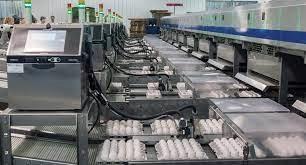 The National Farmers Union (NFU) issues an annual release purporting to estimate the theoretical value that farmers receive for a traditional Thanksgiving meal in 2021. The NFU estimated that ranchers and farmers would receive approximately 14.3 cents for every dollar spent at retail in 2021.
The National Farmers Union (NFU) issues an annual release purporting to estimate the theoretical value that farmers receive for a traditional Thanksgiving meal in 2021. The NFU estimated that ranchers and farmers would receive approximately 14.3 cents for every dollar spent at retail in 2021.
In their somewhat misleading and simplistic statement, the NFU noted, "even though consumers are paying more for food this year almost none of that is being passed on to America's family farmers and ranchers. Multiple mergers and acquisitions during the last several decades have resulted in agriculture and food supply chains that are noncompetitive, fragile and underpay farmers".
The NFU fails to recognize that farmers in large measure produce ingredients that require processing, packaging and transport before purchase. The NFU consistently fails to recognize or acknowledge the contributions along the food chain extending from an ingredient whether it be a bushel of cranberries, a yam or a live turkey.
 To illustrate the impact of the chain of processing and distribution the situation with regard to eggs should be considered. According to the USDA producers of generic shell eggs, during 2021 through October received a national average blended price of 80 cents per dozen for Large nest run eggs with a range of 58 to104 cents per dozen. The average cost of production over the first ten months of 2021 was estimated by the USDA at 71 cents per dozen including feed, pullet depreciation labor, housing and overhead. This implies a margin of 9 cents per dozen or 12.6 percent on a nest run basis. The cost of eggs delivered to a DC would include packing (13 cents), packaging (13 cents), transport (5 cents) and grading loss (5 cents) for a total of 107 cents per dozen. This corresponds to the 107 cents per dozen documented by the USDA as the simple average delivered to a distribution center. The average retail price for generic white eggs was calculated by the USDA to be 164 cents per dozen as a simple average for the four regions over the first nine months of 2021. This would provide retailers with a gross margin of 57 cents per dozen or 35 percent to cover transport, merchandizing, overhead, store losses and operational expenses. Effectively egg producers received on average 65 percent of the retail price or 39 cents on the retail dollar. The complexities of the supply chain with respect to shell eggs clearly denotes the simplistic assumptions by the NFU in their calculation that evidently fails to consider processing and added value to farm-produced ingredients through the supply chain to retail.
To illustrate the impact of the chain of processing and distribution the situation with regard to eggs should be considered. According to the USDA producers of generic shell eggs, during 2021 through October received a national average blended price of 80 cents per dozen for Large nest run eggs with a range of 58 to104 cents per dozen. The average cost of production over the first ten months of 2021 was estimated by the USDA at 71 cents per dozen including feed, pullet depreciation labor, housing and overhead. This implies a margin of 9 cents per dozen or 12.6 percent on a nest run basis. The cost of eggs delivered to a DC would include packing (13 cents), packaging (13 cents), transport (5 cents) and grading loss (5 cents) for a total of 107 cents per dozen. This corresponds to the 107 cents per dozen documented by the USDA as the simple average delivered to a distribution center. The average retail price for generic white eggs was calculated by the USDA to be 164 cents per dozen as a simple average for the four regions over the first nine months of 2021. This would provide retailers with a gross margin of 57 cents per dozen or 35 percent to cover transport, merchandizing, overhead, store losses and operational expenses. Effectively egg producers received on average 65 percent of the retail price or 39 cents on the retail dollar. The complexities of the supply chain with respect to shell eggs clearly denotes the simplistic assumptions by the NFU in their calculation that evidently fails to consider processing and added value to farm-produced ingredients through the supply chain to retail.
The NFU points to integration and consolidation as being responsible for a lower proportion of retail unit price received by individual farmers. Without economy of scale and processing at high levels of throughput using capital intensive facilities and equipment, prices for food products including eggs, broilers and turkeys would be even higher given the efficiencies in producing feed, operating herds and flocks and processing animals with attention to welfare, food safety and sustainability.
The NFU fail to define the term "farmer". With two exceptions, U.S. egg producers are family-owned and operated despite large volumes of production. In the case of broilers and turkeys, integrators provide chicks or poults, feed and technical service and harvest flocks at the end of the production cycle. Farmers receive a fair income for providing labor and housing but do not bear the risk of inflation and feed cost or fluctuations in market price and do not make any investment in processing, marketing, overhead or distribution of product.
The National Farmers Union figure of 14.3 cents on the retail dollar, however it may be calculated, fails to recognize the multiple investments through the entire chain of processing, distribution and the markups imposed by retailers. Consumers in the U.S. have the widest variety of food products available with the highest standards of food safety and spend less on food as a proportion of total income than any other industrialized nation.